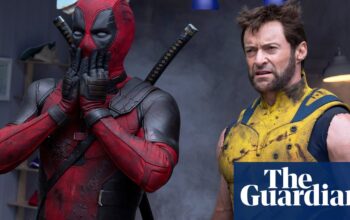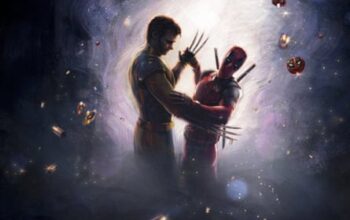F
In honor of reaching its 100th year, Disney was met with a surprise bucket of ice-cold water. This may seem like a fleeting moment, but it has continued to impact the company throughout the year. From the disappointment of Marvel’s Ant-Man sequel at the box office, to lower-than-expected international numbers for their expensive Little Mermaid remake, and even a decrease in profits for the Indiana Jones sequel by Lucasfilm. This trend continued into November, with the failure of The Marvels and underwhelming numbers for Disney’s 100th birthday cartoon, Wish. This is the first year since 2014, excluding pandemic years, that Disney has not produced a billion-dollar hit.
In terms of finances, the only positive outcomes were Elemental and Guardians of the Galaxy Vol 3, as they maintained their success despite underwhelming opening weekends. Although Guardians received favorable reviews, critics have not been enthusiastic about the overall lineup. This is in contrast to 2019, the year before the pandemic, when the company had seven different films that earned over a billion dollars. Even if not all of these films received excellent reviews, the fact that more than half of critics did not actively hate The Lion King can still be considered a victory, especially when looking back.
What has caused the issue? Some have joyfully suggested that Disney has become too “woke” and therefore, broke. However, this implies a lack of understanding of both words in the rhyme scheme, as well as a high level of sensitivity among the audience. Any parents who object to something as harmless as Disney’s supposed “wokeness”, which simply involves featuring women and people of color in leading roles, may struggle to function in most places outside of faith-based entertainment. (In fact, the company’s history of offering minimal representation in minor roles and promoting them as groundbreaking achievements can be off-putting to “woke” audiences, but likely goes unnoticed by the general family audience.)

Some people who are more interested in technology and others who are passionate about the movie experience may argue that Disney Plus, a streaming service launched just before the pandemic, is a better option. Initially, the company seemed well-prepared for an extended closure of theaters with its vast collection of Disney, Marvel, and Star Wars content, along with new TV shows. However, as the pandemic continued, the increasing number of new streaming series and the expectation that all Disney-related content would be available on the platform may have become overwhelming. Three Pixar movies were released exclusively on the streaming service before a fourth one, Lightyear, was released in theaters. Black Widow was available on premium VOD at the same time as its theatrical release, while Encanto was added to Disney Plus only a month after its theatrical debut. The Star Wars franchise has shifted to primarily producing TV content, with no set dates for new movies.
At the time, some of these choices seemed logical due to the unpredictable nature of the continuously evolving Covid-19 situation. However, as others have noted, Disney’s strong branding may have made it particularly susceptible to a less profitable and challenging transition to streaming. The average viewer may not be aware that Universal Pictures and Peacock share a parent company, or even that Peacock exists. While they may opt to wait for movies to become available on streaming, they may not realize that specific films like Jurassic World Dominion or M3gan are owned by Universal and will eventually be added to Peacock. In contrast, it is impossible to overlook Disney’s presence on Disney Plus, or the fact that Disney owns popular brands like Pixar, Marvel, and Star Wars, as these are often heavily advertised together. On the other hand, Paramount may only be associated with Star Trek, while the average person may not immediately think of Mission: Impossible, Transformers, or Eddie Murphy’s 1980s movies as being part of Paramount’s portfolio. Disney’s extensive reach may have made it more challenging to convince audiences to pay full price for theatrical releases.
The vast Disney empire has implications that extend beyond simple economic decisions made by consumers. By the late 2010s, Disney had carefully structured and calculated its main brand and sub-brands: the traditional animation features from Walt Disney Animation, with a history spanning almost a century; the modern-day powerhouse of animation, Pixar, which Disney now fully owns; a successful live-action superhero universe from Marvel, the most popular in the world; a beloved and established world of sci-fi and fantasy from Lucasfilm, primarily through its Star Wars brand; and a consistent stream of remakes of classic animated films with live-action elements. The acquisition of 20th Century Fox was intended to add more variety to these blockbuster releases with some “normal” films (although in reality, mostly horror and Avatar-related content).
However, what occurs when the majority of a studio’s releases seem to be interconnected, whether through narrative or spirit? Their latest film, Wish, features catchy songs, a determined heroine, and appealing animation, but also goes to great lengths to tie together a century’s worth of Disney Animation Easter eggs, essentially serving as a prequel to the studio’s entire library. While some of these references are clever, others feel forced and clutter the movie’s plot with self-referential nods. Interestingly, Wish’s unconventional plot, where a seemingly benevolent but power-hungry king acquires his subjects’ greatest desires with the promise of occasionally granting them, flirts with self-criticism. As the film itself acknowledges in a post-credits scene, “When You Wish Upon a Star” has become Disney’s theme song, and it’s not difficult to interpret King Magnifico (voiced by Chris Pine) as a representation of Disney itself – collecting and commodifying the public’s wishes and dreams, ultimately delivering empty, self-serving spectacles in return.

However, Wish struggles to fully convey its central message about taking action to make wishes come true, as it becomes muddled thematically. The idea that one’s own actions are what make wishes a reality is overshadowed by the inclusion of magical elements, such as a fairy godmother and a “wishing star” from other stories like Cinderella and Pinocchio. This reliance on magic feels reminiscent of woo-woo astrology and detracts from the otherwise sweet and pragmatic message. Similarly, in The Marvels, the talented and charismatic stars are overshadowed by excessive mythologizing and obligatory laser battles, which have become commonplace in most Marvel projects. It seems as though the solution was to add in elements from other Marvel movies, only to hastily remove them at the last minute, leaving the story both charming and borderline confusing. It’s no surprise that audiences were more receptive to Elemental, despite its flaws, as it stays true to its title by focusing on fundamental building blocks rather than relying on pre-franchised characters. For now, Pixar has avoided the feeling of a brand consuming itself – although the release of Inside Out 2 next summer will provide a tougher test.
Skip over the advertisement for the newsletter.
after newsletter promotion
The issue at hand is not simply a matter of too many sequels, a criticism that could be applied to any major movie studio. Instead, it is the constant branding that transforms every logo into a showcase of past successes. (Does every Marvel project truly require an ever-evolving two-minute montage featuring characters, moments, and screenplay pages?) There are undoubtedly a sufficient number of “Disney adults,” not to mention children, who continue to be thrilled by the endless stream of Disney’s Disney-related offerings; some of the company’s most successful releases in recent years have been remakes of its own beloved classics, despite growing disapproval from critics. While the live-action adaptation of The Little Mermaid may not have been financially lucrative, it did generate the type of box office numbers that the studio likely expected (but did not achieve) from films such as Solo, Encanto, The Marvels, and The Jungle Cruise. However, this particular brand pillar is arguably one of the least creatively successful; essentially, it is Disney presenting Disney by Disney, a formula that the company has trained audiences to anticipate. Despite the fact that Disney’s upscale division, Searchlight Pictures (formerly Fox), continues to release excellent films like the upcoming Poor Things and All of Us Strangers, the studio still appears to struggle with how to handle films geared towards adult audiences that do not immediately scream “awards contender.” In fact, it recently sold off the Jeff Nichols film The Bikeriders with what seemed like a disinterested shrug.
The company is heavily dependent on its acquired branding divisions and is eager to mix movies, television, theme parks, and a century’s worth of characters (some of which it does not own) into one homogenous entity. Disney has mastered the art of marketing itself as a comprehensive destination, and has a large following of corporate admirers. As a result, it tends to treat its creative endeavors as mere merchandise in a Disney Store. Rather than considering the desires of a wider audience, the company prioritizes the demands of its shareholders and devoted fans, always seeking more.
Source: theguardian.com


